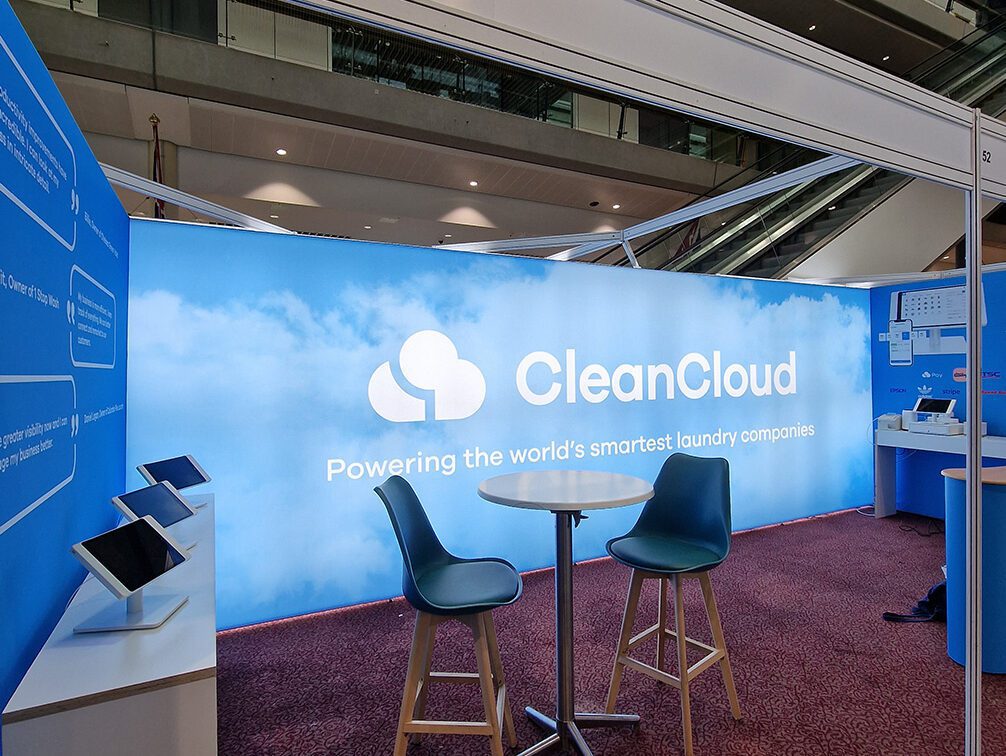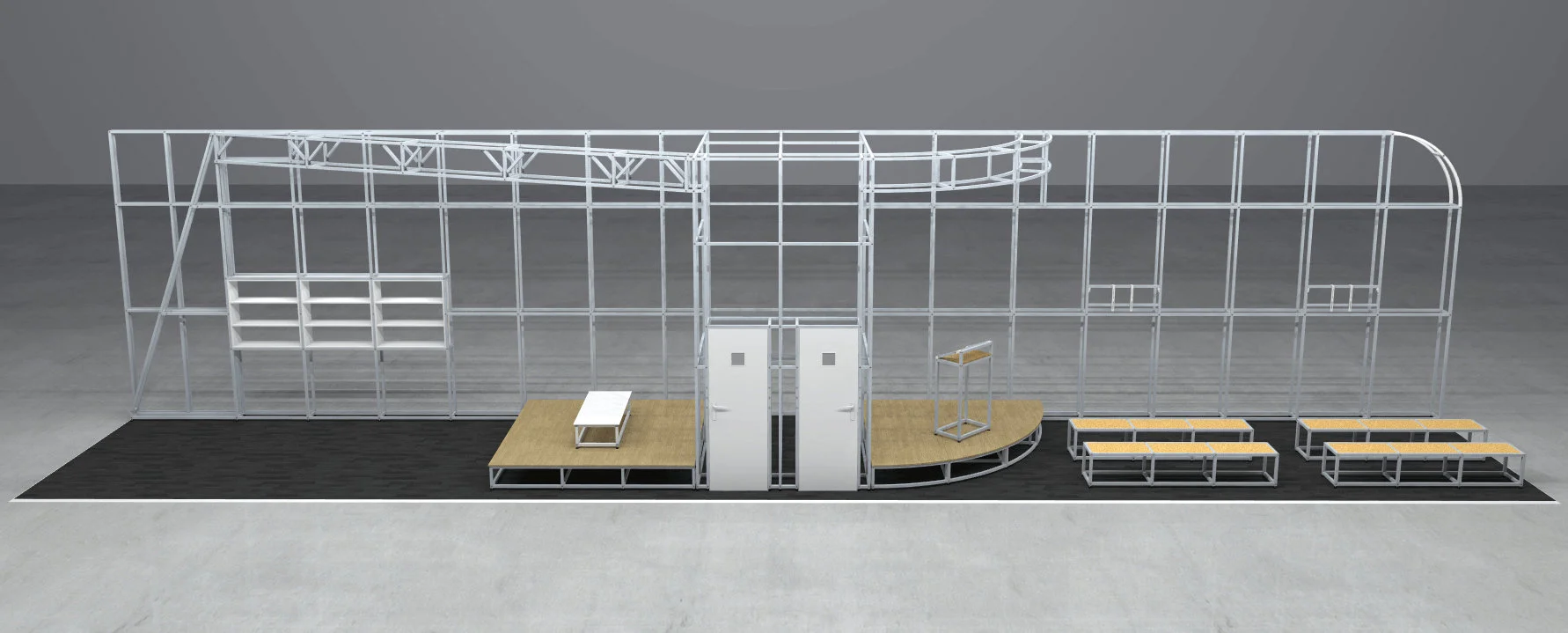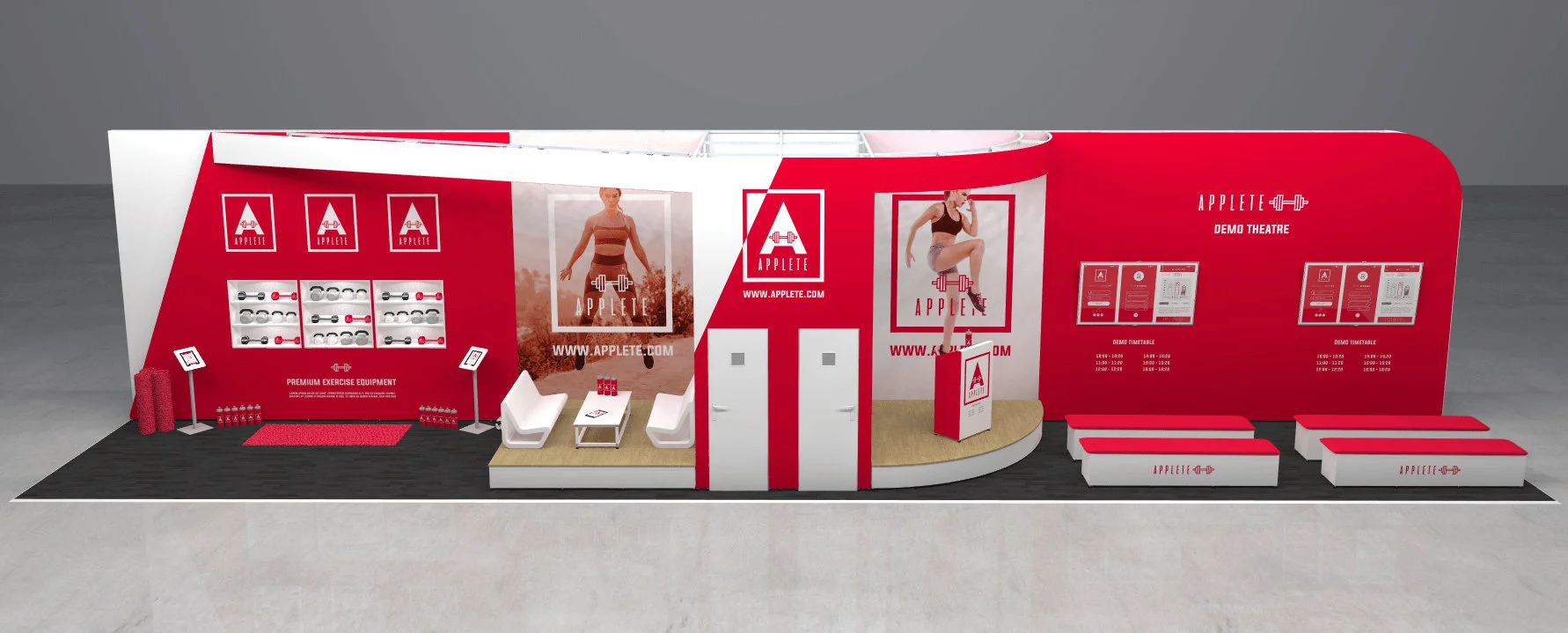Start With These 4 Questions.
Thinking of exhibiting at your next tradeshow? Let this be your essential exhibition stand planning guide — walking you through the four key questions you need to ask before committing your budget or booking your stand.
Have you ever chased a sales lead, left voicemail after voicemail, and still ended up getting nowhere? In today’s competitive landscape, getting heard above the noise is one of the biggest challenges for any business. That’s why exhibitions and trade shows offer such powerful opportunities — they put you face-to-face with real decision-makers in a setting designed for discovery, conversation, and conversion.
But exhibiting successfully isn’t just about showing up. With so many options out there, making the right impact means making the right decisions — early.
Before you commit budget or sign on the dotted line, it’s crucial to ask yourself a few key questions. In this post, we explore the four most important questions to ask before exhibiting, including:
Why am I exhibiting?
Will this tradeshow attract my target audience?
What should I book?
Does this fit my budget?
Get these answers right, and you’ll walk into your next show with clarity, confidence — and a stand that delivers real ROI.
Exhibiting is one of the few marketing channels where you, your brand, and your offer become instantly tangible.
Over the phone, you’re just another salesperson. On the show floor, you’re a living, breathing brand — creating memorable interactions that build trust in seconds.
Face-to-face conversations aren’t just more personal — they’re more effective. In fact, according to research:
“Whilst companies took on average five sales calls to close a sale if the prospect was found by the salesperson, it took only 0.8 sales calls on average to close a sale if the prospect was found at a tradeshow or exhibition.”
— Herbig et al., 1998
Whether you’re launching a product, expanding your client base, or simply increasing visibility, exhibiting allows you to:
Engage new prospects in real time
Demonstrate your offer with impact
Build trust and shorten your sales cycle
But the key to unlocking those benefits is preparation. Let’s look at the first — and arguably most important — question.

If you’re thinking of exhibiting for the first time, it’s essential to be clear on what you’re trying to achieve before you commit budget or time. Before you even look at floorplans or stand packages, get clear on your objectives. It might sound obvious, but too many businesses exhibit simply because “we always do” or “our competitors are going.” That’s not a strategy — that’s a gamble.
Ask yourself:
What does success look like at this event?
Some common (and valid) goals include:
Lead generation — capturing qualified enquiries and booking follow-up meetings.
Brand awareness — increasing visibility in a new market or reinforcing your presence.
Product launches — creating buzz and putting new innovations in front of key buyers.
Market research — testing messaging, pricing, or product-market fit.
Networking — meeting partners, suppliers, press, or potential collaborators.
Clearly defining your objectives will shape:
The type of show you book into
The design of your stand
The staff you bring
And how you measure ROI post-event
If you’re focused on lead generation, your stand might need integrated demo areas or QR-based lead capture. If it’s about brand awareness, you might prioritise bold graphics and open-plan design. If it’s a product launch, interactive displays or lightboxes may take centre stage.
👉 Tip: Write down your top three exhibition goals — and rank them. It’ll give you clarity when budgeting, planning, and briefing your design team.
Not all events are created equal — and bigger doesn’t always mean better.
Before booking any show, take a step back and ask: Will the right people actually be there? The most successful exhibitors are those who align their event choices with their ideal customer profiles — not just the event with the most footfall.

Not all events are created equal — and bigger doesn’t always mean better.
Before booking any show, take a step back and ask: Will the right people actually be there? The most successful exhibitors are those who align their event choices with their ideal customer profiles — not just the event with the most footfall.
Who attends?
Request the organiser’s visitor breakdown — many provide past attendee lists, job titles, industry sectors, and decision-making levels. You’re looking for a clear match between their audience and your prospects.
Does it overlap with my niche?
If you sell to architects, an event aimed at property developers might not hit the mark — but a show with an interiors or materials focus could be ideal.
What’s the exhibitor profile?
Look at who else is exhibiting. If your competitors, industry leaders, or aligned brands are present, that’s a good sign you’re in the right place.
Is the timing right for your audience?
Consider the event calendar. Will your buyers be in budgeting mode, launching season, or procurement cycles
👉 Pro Tip: Ideally, you should attend the shortlist of exhibitions you’re considering before you commit to exhibiting. Walk the floor, see who’s exhibiting, observe foot traffic, and ask questions. It’s the fastest way to judge whether the audience, vibe, and format are a good fit for your business.
If you can’t clearly see how this show connects you to your buyers, it’s probably not the right one — even if it’s well known.
👉 Tip: Don’t be afraid to contact past exhibitors or check LinkedIn for event chatter. When you’re thinking of exhibiting, first-hand feedback often tells you more than any organiser brochure.
Now that you’ve identified the right event and audience, it’s time to start thinking about the logistics and structure of your space — this is where effective exhibition stand planning comes in. From understanding the types of stands available to choosing a layout that fits your goals, the next section will walk you through your main options — and how to decide what’s best for you.
You’ve narrowed it down and attended the shows you’re interested in. So what’s next? Well, exhibition space sells fast — especially at major shows like Crufts, Cosmoprof and Vaper Expo. So first things first: contact the organisers and find out what’s actually available.
Ideally, you want to secure a spot:
Near the main entrance
Along central aisles
Or close to catering and high-traffic hubs
But be aware — these premium locations usually come at a 10–20% uplift. If the only spaces left are in less desirable areas, don’t panic. It’s still possible to make a strong impact with the right stand design and strategy. Just make a note to book earlier next year to get the pick of the floorplan.

Most exhibition venues are divided into two main space types — Shell Scheme and Space-Only.
A ready-built structure provided by the organiser — typically includes walls, carpet, lighting, and a nameboard.
Pros: Quick setup, lower cost, minimal planning.
Cons: Restricted layout and limited branding unless enhanced with upgrades.
Best for: First-time or small-scale exhibitors.
A completely empty floor space — no walls, no carpet, no electrics. You're responsible for arranging the stand design and build.
Pros: Total creative freedom
Cons: Requires more budget, planning, and contractors
Best for: Experienced exhibitors with specific design needs
Shell scheme stands are one of the most popular — and budget-friendly — options for exhibitors. Built from modular aluminium frames with foamex infill panels, they offer a clean, simple framework to work from.
A standard shell scheme package typically includes:
Walling (rear and side panels)
Overhead lighting
Carpet
Fascia nameboard
Standard power socket
💡 What does that mean for you?
If you’ve booked a shell scheme space, all you need to invest in are custom graphics to start standing out. But the possibilities go much further.
With the right design approach, even the most basic shell scheme can be elevated into a high-impact, functional space — complete with custom-built counters, integrated tech, and product displays.
We’ve done exactly that for brands like Miami Foods and Clean Cloud, transforming shell schemes into tailored, on-brand experiences that perform well and look the part.
👉 Tip: If you’ve booked a shell scheme, check out our post:
📘 Shell Scheme Graphics: What Are the Options?


Looking to stand out from the crowd? Then book Space Only!
A space-only stand is just that — a bare floor space. No walls, no carpet, no electrics. You’re responsible for everything, and will need to engage a specialist stand contractor (like us!) to handle the full build.
Yes, it takes more planning, budget, and preparation — but what it offers in return is total creative freedom.
For example, shell scheme stands are usually limited to 2.5m in height due to a ceiling grid. A space-only stand? You can go as high as the venue permits. Imagine a 3, 4, 5, or even 6-metre-high stand towering above your competitors — grabbing attention from across the hall.
If you decide to go for a Space-Only exhibition stand, you’ll essentially have four main options for bringing your space to life:
Portable Exhibition Stand
Lightweight and compact, these stands are ideal for small spaces or quick installs. They’re easy to transport and perfect for solo or minimal-crew setups.
Self-Build Modular Exhibition Stand
Designed for simple tool-free setup, these systems give you flexibility without needing specialist contractors. Great for repeat exhibitors or those working with standard stand sizes.
Exhibition Stand Hire (recommended for those new to space only)
A cost-effective, low-commitment solution — you get a professionally designed stand delivered, installed, and dismantled for you, without the capital expense. Perfect for one-off events, international shows, or trial campaigns.
Custom Modular Exhibition Stand (recommended)
Professionally designed and built using modular systems like T3, these offer a high-end look with reusable components — perfect for growing brands wanting impact, scalability, and sustainability.
Custom Fabricated Build
Built from raw materials like timber, MDF, foamex, and laminates, this approach offers total freedom in shape and finish. Typically a one-off build, suited to complex layouts or immersive experiences.
Not sure where to start when you’re thinking of exhibiting? That’s where we come in. We help brands turn ideas into high-impact exhibition stands. Whether you’re exploring modular systems, planning a custom build, or considering a full-service hire solution — we can help.
At 5 Studio UK, we design, build, and deliver exhibition stands tailored to your space, goals, and budget. From concept to install, we’ve got you covered.
From towering heights and sweeping curves to integrated lighting, AV, and bespoke joinery, every element is engineered within a lightweight, flexible framework — designed to deliver standout results, time and again.


So, you’ve decided to exhibit. You’ve chosen your tradeshow — and now it’s time to figure out what to book. Naturally, your budget will guide your next move, and this is where effective exhibition stand planning becomes essential.
Our number one piece of advice? Have a clear, realistic budget from the start.
Our exhibition design team has delivered stands costing as little as £500, all the way up to £20,000+, depending on the stand type, complexity, and whether immersive features like LED AV walls are included. Knowing your budget upfront allows contractors like us to tailor the design, materials, and services to suit your goals — without any compromise on quality.

Still unsure what kind of budget to allocate? We break this down in more detail in our Exhibition Stand Cost Guide, but here’s a quick summary of typical investment ranges based on the type of stand you choose:
| Stand Type | Approximate Budget (Ex. VAT) |
|---|---|
|
Seamless Shell Scheme Graphics 3m x 3m, 2 sides open |
£1,850 – £2,000 |
|
Self-Build Modular Stand Based on 9–12m² |
£3,000 – £6,000 |
|
Exhibition Stand Hire All-inclusive design, build, graphics & install |
£350 – £500 per m² |
|
Custom Modular Stand (T3 etc.) High-impact stand with lighting, AV, lightboxes & bespoke joinery |
£8,000 – £18,000+ |
|
Custom Fabricated Build Includes AV, lighting, immersive features & joinery |
£15,000 – £30,000+ |
There are two smart ways to reduce long-term spend without compromising on quality:
Modular Stands – Reusable, reconfigurable, and scalable across different shows and stand sizes. A smart investment if you’re exhibiting more than once.
Exhibition Stand Hire – A fixed-cost, low-commitment solution that includes everything from design to installation — ideal for one-off shows or tight budgets.
Start early. Ideally begin planning 6–9 months before the event. This allows you to take advantage of early-bird deals on stand space, hotels, AV, power, and lighting. While we can design and deliver a modular stand in under 2 weeks, last-minute shows usually come at a premium.
Don’t DIY unless you’re prepared. Most of our solutions are tool-free and user-friendly, but we don’t recommend self-installing unless you’ve had training.
Install & Dismantle Packages: £1,750–£2,250+VAT per show (includes transport)
Training & Pre-Build Service: Approx. £750+VAT
Break down your costs. For space-only stands, map out every required element: flooring, walls, lighting, graphics, electrics, transport, and storage. We’re happy to help you put together an itemised plan.
If you’re thinking of exhibiting why not take advantage of our custom exhibition stand design, which includes a free no obligation quote. All you need to do is give us your display design brief, whether it be a simple scribble or something more elaborate. We will then transform your idea into a 3D CAD visual and get it back to you within 72 hours along with a full quotation.

Submit your brief for a free design and fixed quote — we’ll handle the rest. Prefer to talk it through? Just give us a call. Feel free to challenge us with your design ideas and display headaches. We can make it happen!
Tell us what you need — we’ll send a tailored design proposal and transparent pricing, with options to rent or purchase.
Let’s book a call to discuss your brand goals, upcoming projects, and how our team can help bring your ideas to life.
Let’s book a call to discuss your brand goals, event calendar, and how a Hybrid and/or Immersive stand can elevate your future presence